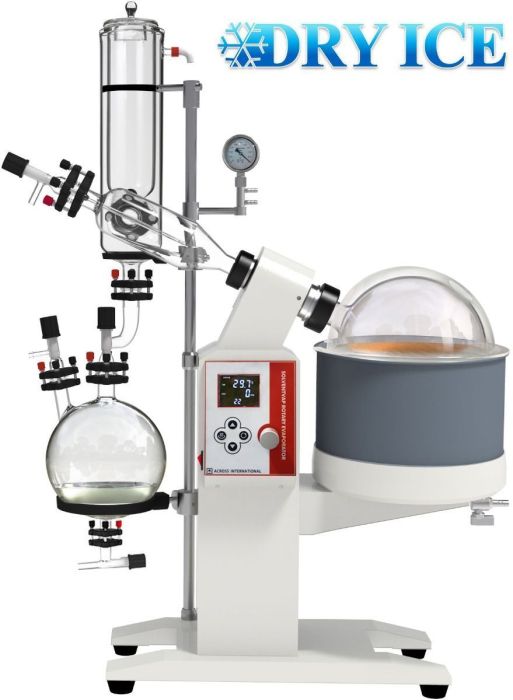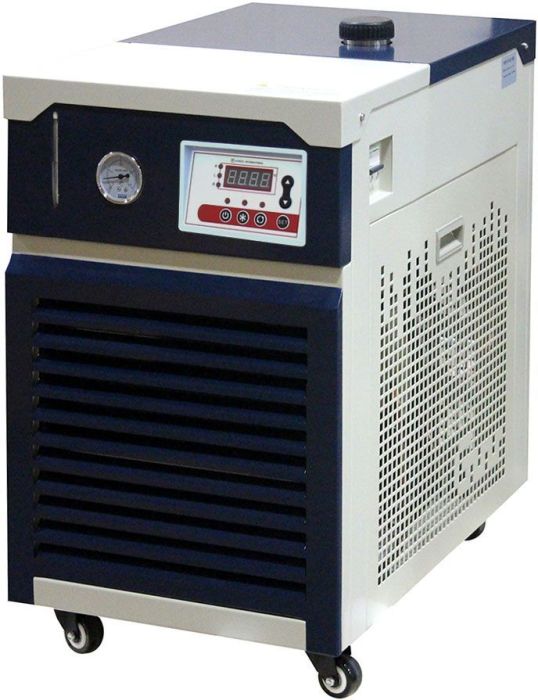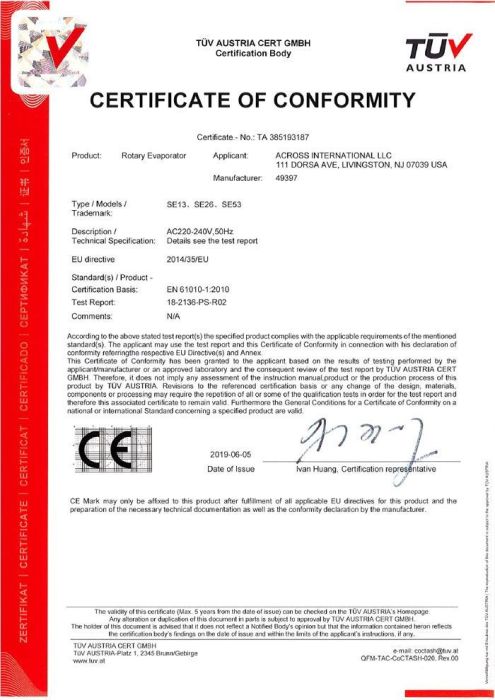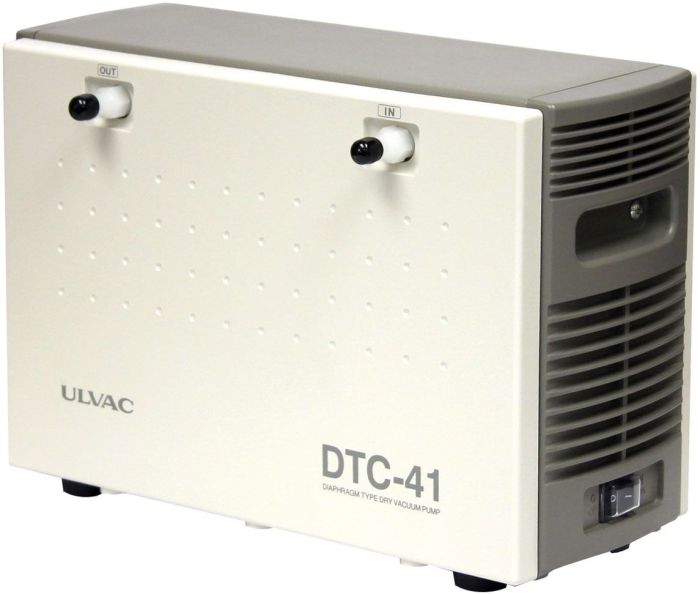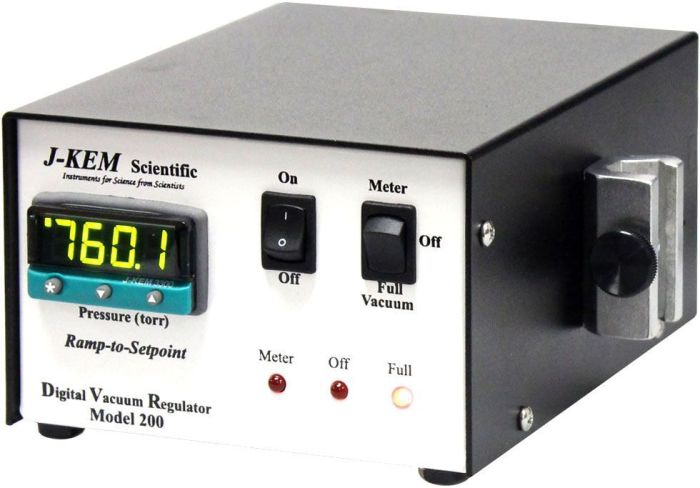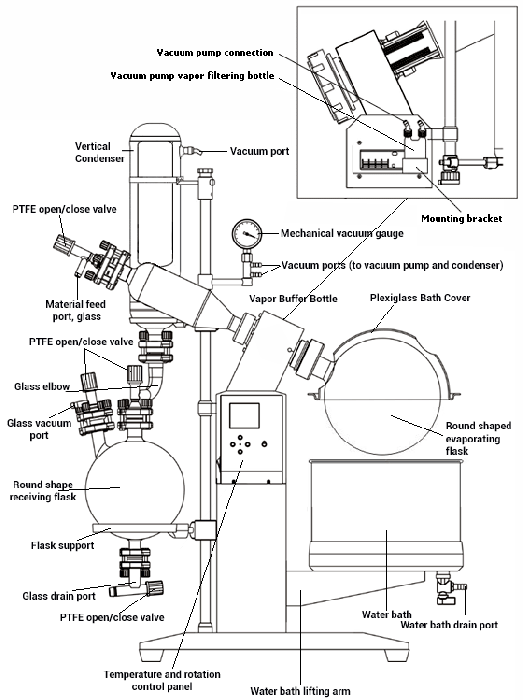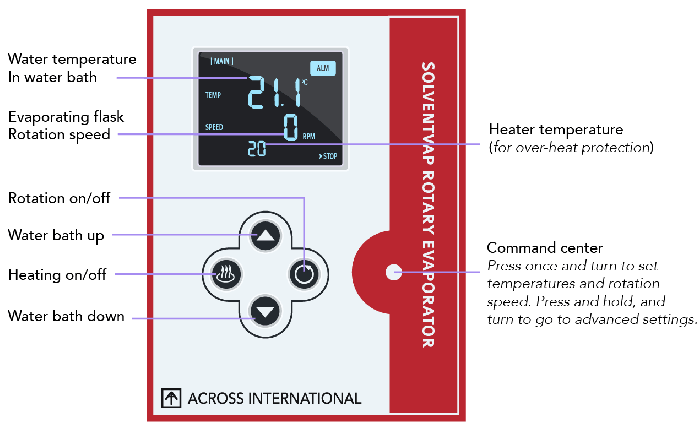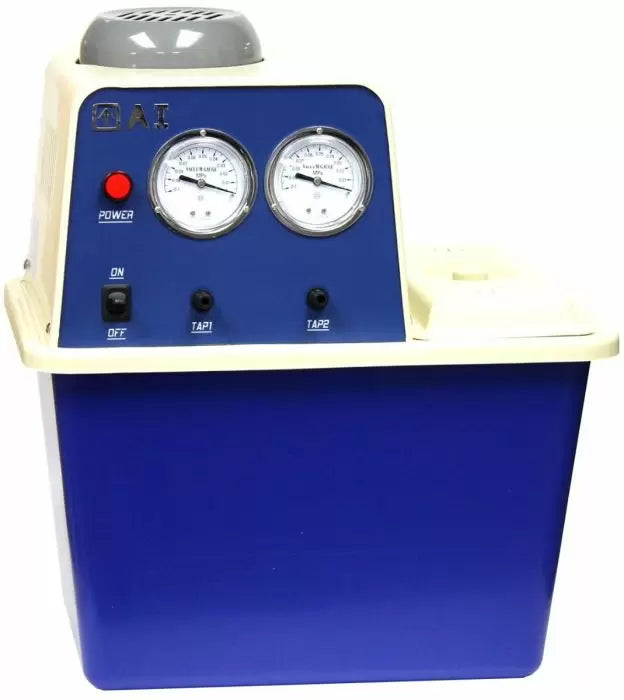Ai SolventVap 5L series rotary evaporators is now ETL tested to UL/CSA standards. This certification is required by many municipalities, and it also provides a higher standard of equipment safety and lifespan. SolventVap come with all PTFE valves for solvent-resistant operations. Also come with them are vertical glassware and digital temperature/rotation control. Its optimized bath volume allows for rapid heat-up times. Thats why our SolventVap evaporators consistently deliver reliable and reproducible process results that are usually reserved for more costly systems. Another important aspect of the SolventVap is the safety features, which includes dry-run protection, water bath over-temperature shut-off protection, and fuse protection.
Rotary evaporator features a specially designed motor and worm gear, which provides constant rotation at speeds from 10 to 180 rpm. As the flask containing the solvent is rotated, it continually transfers a thin layer of liquid over the entire inner surface. This gives a very large surface area for evaporation, which is caused by the gentle heating from the water bath. The rotating system is fitted with a special seal that allows the apparatus to be placed under vacuum, effectively reducing the boiling point of the solvents and removing the vapor phase, making the process much more efficient. Each unit is also equipped with an easy-to-use vacuum release and a continuous feed system, which allows solvent to be constantly drawn into the rotating flask without needing to stop the operation.
Digital water bath operates from ambient temperature to 99C (210F) with PID temperature control stepping at 0.1C increments. Heating coils are located directly inside the pan for the most efficient heating possible. A built-in overheat protector will shut down power, should the controller fail.
Standard Glassware Set includes 1.32 gallon (5 liters) round-bottomed evaporating flask, 0.79 gallon (3 liters) round-bottomed receiving flask, and vertical cold trap condenser. Rotary evaporators with vertical condenser for are great for distillation of solvents with higher boiling points.
Features
- ETL tested to UL and CSA standards. CE certification optional.
- No chiller needed, utilizes dry ice for optimal efficiency.
- Water bath cover gives you uniform temperature inside evaporation flask as well as energy saving by reducing heat loss. It also creates a better lab environment by preventing heat and humidity from escaping.
- Solvent-resistant PTFE and Viton gaskets, ensuring long time operation.
- Specialized motor with extremely compact, intermeshed worm and worm gear provides precise driving for very quiet, vibration-free operation.
- Downward-condensing vacuum connection design ensures safe vacuum operation.
- Motorized water bath lifting for precise control.
- Easy, straight-forward visual operation with digital speed and temperature display.
- PID temperature controller ensures accurate temperature control is maintained.
- One year warranty on rotary evaporator except for glassware and all sealing gaskets.
Your safety is important to us! Please use caution when operating. Users of glass reaction equipment must take all necessary precautions to avoid contact with rotating parts, particularly entanglement of loose clothing, hair, necklaces, or other jewelry. Under these circumstances, the winding action of the rotating parts can draw the user(s) into the apparatus, resulting in breakage of glassware, burns, and/or chemical exposure. Extra caution must also be taken when operating with air-reactive materials, especially under vacuum. A leak can draw air into the apparatus and cause a violent reaction to occur.
A rotary evaporator is a device used in chemical laboratories for the efficient and gentle removal of solvents from samples by evaporation. The process of rotary evaporation is most often used to separate solvents with low boiling points, such a n-hexane or ethyl acetate, from compounds which are solid at room temperature and pressure. However, careful application also allows for the removal of a solvent from a sample containing a liquid compound, if there is minimal co-evaporation (azeotropic behavior) and a sufficient difference in boiling points at the chosen temperature and reduced pressure.
Example: The following table illustrates a variety of substances, ordered by increasing vapor pressure (in absolute units).
Payment & Security
Your payment information is processed securely. We do not store credit card details nor have access to your credit card information.

